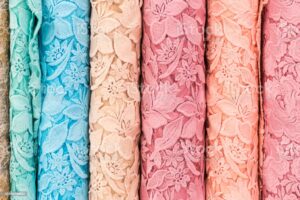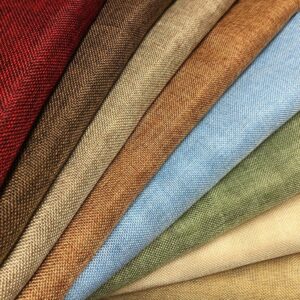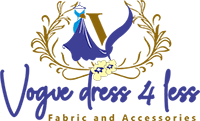Deciding which sort of cloth to form an item with is a crucial decision, as fabrics can have countless qualities. From natural to synthetic fibers and from knitting to woven, here’s a glance at different fabric types and the way to spot them.
24 types of cloth fabrics
1: Canvas.

Canvas may be a plain-weave fabric typically made out of heavy cotton yarn and, to a lesser extent, linen yarn. Canvas fabric is understood for being durable, sturdy, and heavy duty. By blending cotton with synthetic fibers, canvas can become waterproof or maybe waterproof, making it an excellent outdoor fabric.
2: Cashmere.

Cashmere may be a sort of wool fabric that’s made up of cashmere goats and pashmina goats. Cashmere may be a natural fiber known for its extremely soft feel and great insulation. The fibers are very fine and delicate, feeling almost sort of a silk fabric to the touch. Cashmere is significantly warmer and lighter than sheep’s wool. Often cashmere is formed into a wool blend and mixed with other sorts of wool, like merino, to offer it added weight, since cashmere fibers are very fine and thin.
3: Chenille.

Chenille is that the name for both the sort of yarn and therefore the fabric that creates the soft material. The threads are purposefully piled when creating the yarn, which resembles the fuzzy exterior of the caterpillar. Chenille is additionally a woven fabric that will be made up of a spread of various fibers, including cotton, silk, wool, and rayon.
4: Chiffon.
Chiffon is a lightweight, plain-woven fabric with a small shine. Chiffon has small puckers that make the material a touch rough to the touch. These puckers are created through the utilization of s-twist and z-twist crepe yarns, which are twisted counter-clockwise and clockwise respectively. Crepe yarns also are twisted much tighter than standard yarns. The yarns are then woven during a taffeta weave, which suggests one weft thread alternates over and under one warp thread. The sheer fabric is often woven from a spread of textile types, both synthetic and natural, like silk, nylon, rayon, or polyester.
5: Cotton.

Cotton may be a staple fiber, which suggests it’s composed of various, varying lengths of fibers. Cotton is formed from the natural fibers of cotton plants. Cotton is primarily composed of cellulose, an insoluble compound crucial to plant part, and maybe a soft and fluffy material. The term cotton refers to a part of the cotton that grows within the boil, the encasing for the fluffy cotton fibers. Cotton is spun into yarn that’s then woven to make a soft, durable fabric used for everyday garments, like t-shirts, and residential items, like bedsheets. Cotton prints and cotton solids are both available designs.
6: Crêpe.

Crêpe may be silk, wool, or synthetic fabric with a particular wrinkled and bumpy appearance. Crêpe is typically a light-to-medium-weight fabric. Crêpe fabric is often wont to make clothes, like dresses, suits, blouses, pants, and more. Crêpe is additionally popular in-home decor for items like curtains, window treatments, and pillows.
7: Damask.

Damask may be a reversible, jacquard-patterned fabric, meaning that the pattern is woven into the material, rather than printed thereon. The fabric’s design is made through the weave, which may be a combination of two different weaving techniques—the design is woven employing a weave, while the background is achieved through a clear, twill, or sateen weave. Damask patterns are often either multi-colored or single-colored. Damasks are often made up of a spread of various textiles, including silk, linen, cotton, wool, or synthetic fibers, like rayon. Learn more about damask fabric here.
8: Georgette.

Georgette may be a sort of crêpe fabric that’s typically made up of pure silk but also can be made up of synthetic fibers like rayon, viscose, and polyester. Crêpe Georgette is woven using tightly twisted yarns, which create a small crinkle effect on the surface Georgette is sheer and lightweight and features a dull, matte finish.. Silk georgette is extremely almost like silk chiffon, which is additionally a kind of crêpe fabric, but georgette isn’t as sheer as chiffon due to the tighter weave. Georgette fabrics are sometimes sold in solid colors but often georgette is printed and boasts colorful, floral prints.
9: Gingham.

Gingham may be a piece of cotton fabric, or sometimes a cotton blend fabric, made with dyed yarn is woven employing a taffeta weave to make a checked pattern. Gingham is typically a two-color pattern, and popular combinations are red and white gingham or blue and white gingham. The checked pattern can are available in a spread of sizes. Gingham pattern is reversible and appears an equivalent on each side. Gingham may be a popular fabric thanks to its low cost and simple production. Gingham is employed frequently for button-down shirts, dresses, and tablecloths.
10: Jersey.

Jersey may be a soft stretchy, knit fabric that was originally made up of wool. Today, the jersey is additionally made up of cotton, cotton blends, and artificial fibers. the proper side of jersey knit fabric is smooth with a small single rib knit, while the backside of jersey is piled with loops. the material is typically light-to-medium weight and is employed for a spread of clothing and home items , like sweatshirts or bed sheets.
11: Lace.

Lace may be a delicate fabric made up of yarn or thread, characterized by open-weave designs and patterns created through a spread of various methods. The lace fabric was originally made up of silk and linen, but today cotton thread and artificial fibers are both used. Lace may be a decorative fabric that won’t to accent and embellish clothing and residential decor items. Lace is traditionally considered a luxury textile because it takes tons of your time and expertise to form.
12: Leather.

Leather is any fabric that’s made up of animal hides or skins, and different leathers result from differing types of animals and different treatment techniques. While cowhide is that the hottest animal product used for leather, comprising about 65 percent of all leather produced, almost any animal is often made into leather, from crocodiles to pigs to stingrays. Leather may be a durable, wrinkle-resistant fabric, and it can combat many various looks and feels supported the sort of animal, grade, and treatment.
13: Linen.

Linen is a particularly strong, lightweight fabric made up of the flax plant. Linen may be a common material used for towels, tablecloths, napkins, and bedsheets, and therefore the term “linens,” i.e. bed linens, still refers to those home items, though they’re not always made out of linen fabric. the fabric is additionally used for the inner layer of jackets, hence the name “lining.” It’s an incredibly absorbent and breathable fabric, which makes it ideal for summer clothing because the lightweight qualities allow air to undergo and moderate blood heat.
14: Merino Wool.

Merino wool may be a sort of wool gathered from the coats of merino. T While traditional wool is notorious for being itchy, merino wool is one of the softest sorts of wool and doesn’t aggravate the skin. this is often due to the tiny diameter of the fine merino fibers, which makes it more flexible and pliable and thus less itchy. Merino wool is taken into account as an expensive fiber and is employed frequently for socks and outdoor clothing. Merino wool is understood for being odor-resistant, moisture-wicking, and breathable.
15: Modal.

Modal fabric may be a semi-synthetic fabric made up of beech pulp that’s used primarily for clothing, like underwear and pajamas, and home items, like bedsheets and towels. Modal may be a sort of rayon, another plant-based textile, though it’s slightly more durable and versatile than rayon. Modal is usually blended with other fibers like cotton and spandex for added strength. Modal is taken into account an expensive textile because of both its soft feel and high cost because it is costlier than either cotton or viscose. Learn more about modal fabric in our complete guide here.
16: Muslin.
Muslin may be a loosely woven cotton fabric. It’s made using the taffeta weave technique, which suggests that one weft yarn alternates over and under one warp yarn. Muslin is understood because the material utilized in fashion prototypes to check patterns before cutting and stitching the ultimate product. Muslin is right for testing patterns, as it’s lightweight and gauzy, therefore it can mimic drape and fit well and is straightforward to stitch with.
17: Organza.
Organza may be a lightweight, sheer, plain-woven fabric that was originally made up of silk. the fabric also can be made up of synthetic fibers, primarily polyester and nylon. Synthetic fabrics are slightly more durable, but the material is extremely delicate and susceptible to frays and tears. Organza is additionally characterized by very small holes throughout the material, which are the spaces between the warp and weft thread within the plain-weave pattern. the standard of organza is defined because the number of holes per inch—more holes indicate better quality organza. Organza is extremely popular for wedding gowns and evening wear because it is the shimmery and translucent quality which creates decadent silhouettes.
18: Polyester.
Polyester may be a man-made man-made fiber created from petrochemicals, like coal and petroleum. Polyester fabric is characterized by its durable nature; however it’s not breathable and doesn’t absorb liquids, like sweat, well. Polyester blends also are very fashionable because the durable fiber can add strength to a different fabric, while the opposite fabric makes polyester more breathable.
19: Satin.
Satin is one among the three major textile weaves, along taffeta weave and twill. The weave creates an elastic, shiny, soft fabric with a gorgeous drape. Satin fabric is characterized by a soft, lustrous surface on one side, with a duller surface on the opposite side. this is often a results of the satin weaving technique, and there are many variations on what defines a weave .
20: Silk.
Silk may be a natural fibre produced by the silk worm, an insect, as a cloth for his or her nests and cocoons. Silk is understood for its shine and softness as a cloth . it’s an incredibly durable and powerful material with a gorgeous drape and sheen. Silk is employed for formal attire, accessories, bedding, upholstery, and more.
21: Spandex.
Also referred to as Lycra or elastane, Spandex may be a man-made fiber characterized by its extreme elasticity. Spandex is mixed with several sorts of fibers to feature stretch and is employed for everything from jeans to athleisure to hosiery.
22: Suede.
Suede may be a sort of leather made up of the underside of the animal product , giving it a soft surface. Suede is typically made up of lambskin, but it’s also made up of other sorts of animals, including goats, pigs, calves, and deer. Suede is softer thinner, and not as strong as full-grain, traditional leather. However, suede is extremely durable, and thanks to its thin nature, it’s pliable and may be molded and made easily. Suede is employed for footwear, jackets, and accessories, like belts and bags.
23: Taffeta.
Taffeta maybe a crisp, plain-woven fabric made most frequently from silk, but it also can be woven with polyester, nylon, acetate, or other synthetic fibers. Taffeta fabric typically features a lustrous, shiny appearance. Taffeta can vary in weight from light to medium and in levels of sheerness, counting on the sort of fiber used and therefore the tightness of the weave. Taffeta may be a popular lining fabric, because the material is decorative and soft, and it’s also used for evening wear and residential decor.
24: Toile.
Toile de Jouy, or just toile, was a selected sort of linen printed with romantic, pastoral patterns during a single color—usually black, blue, or red—on an unbleached fabric. Although the word toile means the fabric in French, the word toile has evolved to also ask the first design aesthetic of the material, which gained popularity in France within the 1700s. Toile designs are popular for non-fabric items like wallpaper and fine china. Toile fabric is employed for clothing, upholstery, window treatments, and bedding.
visit our store to check out our newest arrivals of your favorite fabric material – click here


